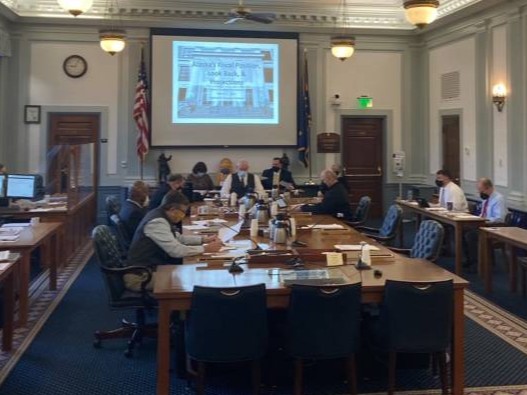
Most Alaskans who provided testimony this week on the proposed state budget supported stable or increased spending on state programs.
The Senate Finance Committee heard roughly four hours of public testimony from nearly 100 people on Wednesday and Thursday.
By a ratio of nearly six to one, more people testified in favor of spending on government programs compared with people favoring budget cuts. Gov. Mike Dunleavy’s budget proposal includes $6.3 billion in spending on the portion of the budget directly controlled by the Legislature. That’s $1.27 billion more compared with last year, driven by Dunleavy’s proposal for $2 billion in permanent fund dividends. Excluding PFDs and one-time COVID-19 expenses, the budget includes a $79 million reduction, according to the nonpartisan Legislative Finance Division.
Most offered support for specific state programs like the Alaska Marine Highway System and the community assistance program, through which the state pays municipal governments.
Amy Lujan of Juneau spoke more broadly in favor of funding the budget. She is the executive director of the Alaska Association of School Business Officials.
“For several decades now, past legislators have become very skilled at kicking the can down the road,” she said. “It seems like there’s always something to save us. It could be savings accounts to drain, an influx of oil revenue, and now, federal pandemic relief money.”
Lujan said she supported a broad-based tax.
Ouzinkie Mayor Elijah Jackson was among several local officials who testified. He said reducing state funding for community assistance is “a punch in the gut” to rural communities.
But others said they would like to see lower spending and the full Permanent Fund dividends proposed by Gov. Mike Dunleavy.
Miranda Nelson of Nikiski said she supports Dunleavy’s plan for PFDs based on the formula in state law.
“We want a smaller and smarter government that works for us,” she said.
There is still a lot of work to do on the budget, including another opportunity for public testimony.
In the other legislative chamber, House Finance Committee co-chair Rep. Neal Foster, a Nome Democrat, said his committee is tentatively aiming to hear public testimony on April 1 through April 3. The budget could reach the House floor in mid-April, he said.
That puts the Legislature on schedule to have a session of more than 90 days again. Not counting two sessions in which the Legislature immediately went into a special session, it’s only had two 90-day sessions since a voter-passed initiative went into effect in 2008 saying that sessions should be 90 days. Friday is the 60th day of the session.
Andrew Kitchenman is the state government and politics reporter for Alaska Public Media and KTOO in Juneau. Reach him at akitchenman@alaskapublic.org.




